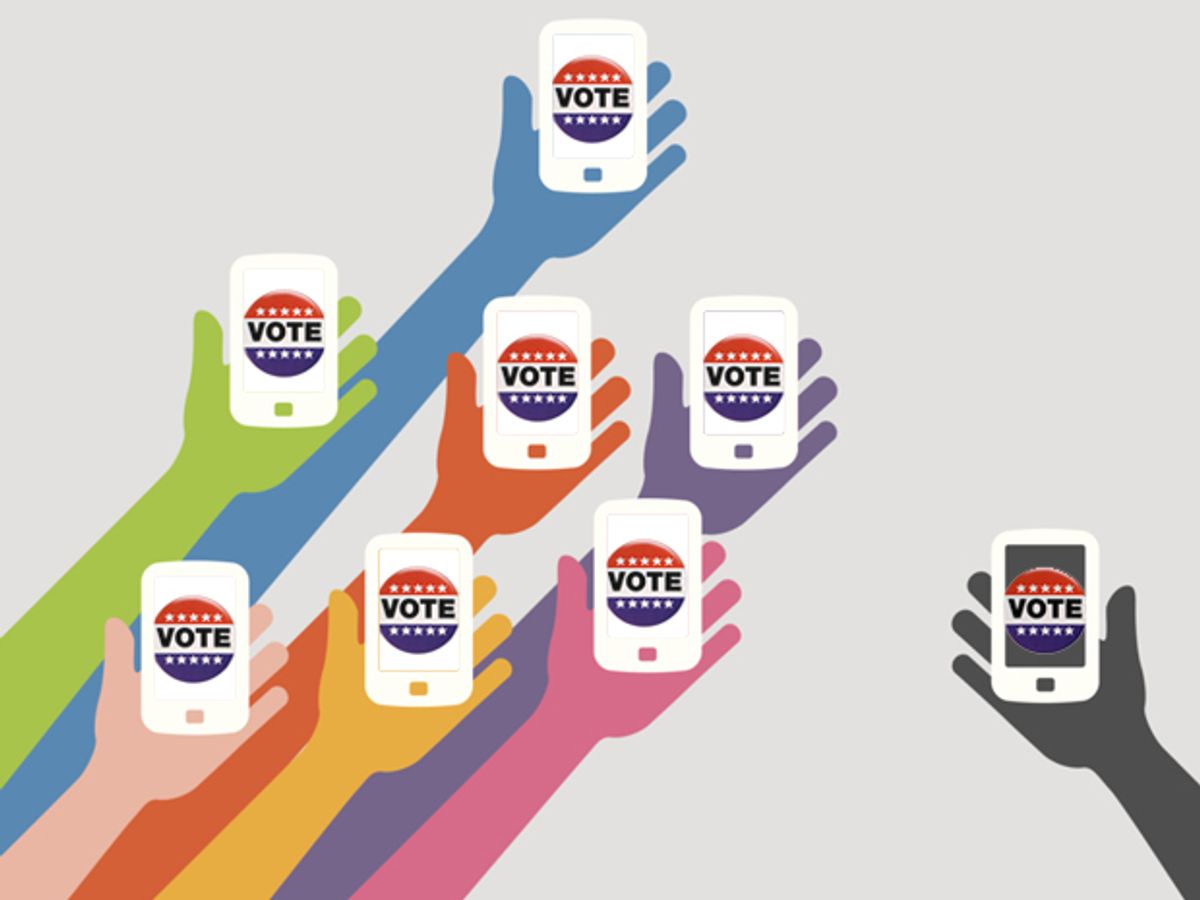Downloading an election app on your smartphone could someday replace the need to join long lines of fellow voters, and it might make elections work better. Researchers have found that smartphone owners make fewer errors using a mobile voting system than when using traditional voting methods.
A mock election conducted by Rice University researchers showed how voting on smartphones offers a more user-friendly process compared to electronic voting machines or paper ballots, but only among voters already familiar with smartphones. If computer scientists can solve the related security challenges, mobile voting could help boost election participation among both young and old smartphone owners in the future.
"Nobody likes to wait in line at the polling place, and so mobile voting offers the opportunity to cast votes when and where it is convenient for the voter," said Phil Kortum, assistant professor of psychology at Rice University, in a press release.
Smartphone voting could do more than just improve voter participation by allowing individuals to vote using a familiar technology. It could also reduce the administrative costs of running polling stations and managing electronic voting machines or paper ballots.
The researchers recruited 84 study participants ranging in age between 18 and 68 years, including 48 smartphone owners. They also designed a mobile voting system, reporting the details in the January 2014 issue of Human Factors: The Journal of the Human Factors and Ergonomics Society.
Smartphone owners among the study participants made fewer mistakes while using the mobile voting system. But there was no significant difference in error rates for non-smartphone owners who used either the mobile voting system or traditional voting methods—a finding that implies room for improvement in possible future designs for mobile voting.
The study results could help shape future voting platforms and technologies at a time when smartphone ownership continues to rise in the United States and around the world. The Pew Research Internet Project found that about 56 percent of U.S. adults owned smartphones as of June 2013. (91 percent of U.S. adults owned some kind of phone.)
But don't expect to skip out of long lines for Election Day just yet. A mobile voting system or any type of remote, online voting process still faces huge security challenges that go beyond the technical glitches of electronic voting machines. Both voters and politicians will need to feel confident that any smartphone-based voting system can authenticate registered voters, as well as secure their votes against glitches or intentional hacking.
Secure online voting would almost certainly come first before any serious consideration of mobile voting systems. A 2009 Congressional effort to make voting more accessible for U.S. military personnel deployed overseas may pave the way for online voting on a broader basis. In 2013, a number of computer scientists signed a statement endorsing the pilot program's efforts to make remote electronic voting a reality.
Image: iStockphoto
Jeremy Hsu has been working as a science and technology journalist in New York City since 2008. He has written on subjects as diverse as supercomputing and wearable electronics for IEEE Spectrum. When he’s not trying to wrap his head around the latest quantum computing news for Spectrum, he also contributes to a variety of publications such as Scientific American, Discover, Popular Science, and others. He is a graduate of New York University’s Science, Health & Environmental Reporting Program.



